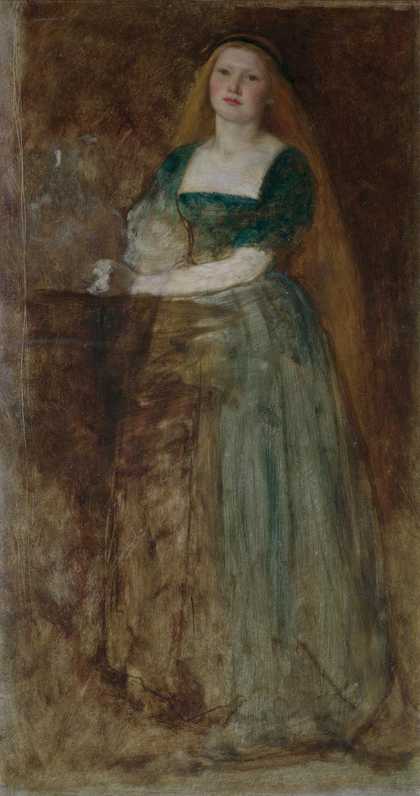
Joanna Mary Wells
Gretchen (1861)
Tate
Joanna Mary Boyce was born in London 7 December 1831. Fondness for drawing was shown at an early age.
To ardent and enthusiastic studies at home, often pursued under difficulties, succeeded at the age of eighteen more regular artistic training, first in Mr. Gary’s school, subsequently in the late Mr. Leigh’s.
Her first ambitious essay Elgiva (a head) was exhibited at the Academy in 1855, and extorted praise from Ruskin (in his first Academy pamphlet), who at that time knew nothing of the artist.
In September she visited Paris and joined a lady’s class in Couture’s atelier, putting an end to her attendance after a few weeks.
In May 1857 she started for a tour in Italy taking France on her way.
At Rome she commenced an important picture, The Boys’ Crusade, and executed several sketches and studies. At the end of March 1858 she returned to England and soon afterwards commenced her delightful picture of Peep-bo. The autumn of the same year she spent at Hoimbury Hill in Surrey near Leith Hill. Here she painted her picture of The Outcast, afterwards poetically entitled No joy the blowing season gives, which was rejected at the Royal Academy and afterwards exhibited at the Winter Exhibition together with Do I like butter?, a charming study of a little girl making that enquiry of a buttercup. The autumn of 1859 she passed at Hindhead Common.
In the present year’s Academy Exhibition three of her pictures, Peep-bo, the Heather-gatherer and La Veneziana, pictures of great and various excellence, were all more or less favourably hung and commanded from the critics that notice they deserved, though also controversy. One or two works, small in size, but of high intrinsic importance, upon which she was busied before death arrested for ever her sure and rapid progress in the art, call for notice. One of these was a Sibyl (unfinished) the head exceedingly grand and bearing the direct impress of mental elevation and force in the artist.
Extracted from the Critic of July 27, 1861
